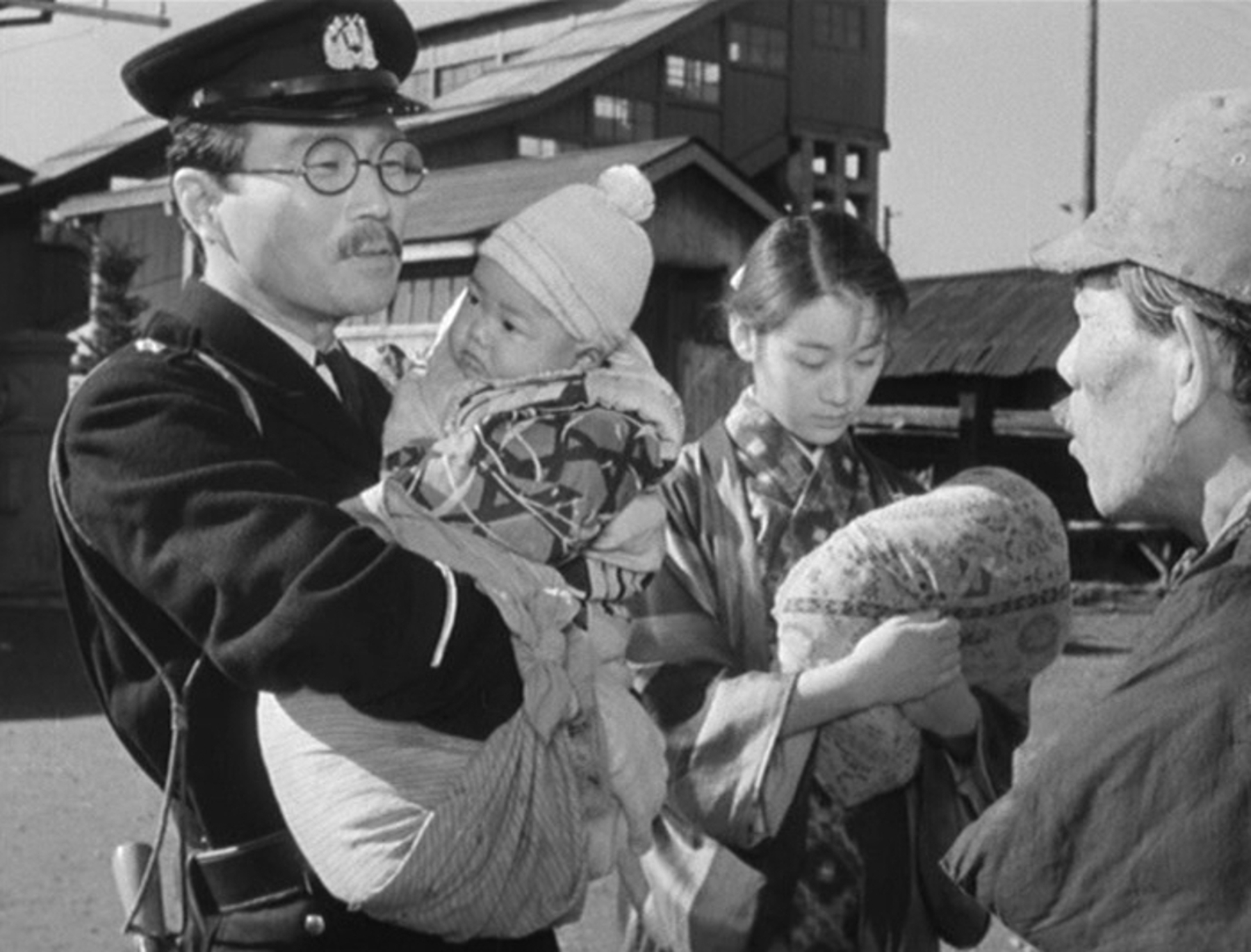He is a man, who is idle, uneducated, lonely and knows he bears a cross.– Shin Hasegawa
The air is diffused with slightly burned smell of melted cheese and cellulose – the fluorescent sign, “Nino’s Pizzeria”, illuminates the cool dry night. The driver parks his car silently in front of the place. He pulls out a SPFX mask, a shabby plain-looking face made for movie stunt job. Let’s wait and see, until Nino comes out. Let’s wait and see. Pretty soon, he would come out, carrying smell of alcohol, rotten stomach and saliva around him. He would come out of that front door. The printing shop next to Nino’s has the same front door, so does the shoe repair, and the eyewear retail, too. But this one is different. Not because Nino put checker-board patterns on it. Silly-looking thing, Nino thinks the patterns would block the view from outside. No, the eyes buried in the SPFX mask can see him through it. Millions of strip-mall restaurants and nail-salons across the country have the same front doors, but this one is different. Because, pretty soon, Nino will come out through that door, and go straight to hell.
Since last year’s release, I wanted to see Nicolas Winding Refn’s DRIVE. After reading its synopsis, I was fascinated. Because it’s a genre movie. Not that L.A. noir thing. It’s one of the oldest genre in cinema, the outsider-tries-to-save-another-outsider’s-wife-and-kid-from-a-bunch-of-thugs genre. And Japanese cinema had been obsessed with this genre since 1920s, and a major prototype being KUTSUKAKE TOKIJIRO, a Jidaigeki film directed by Yoshiro Tsuji in 1929.
Tokijiro, a wandering gambler and outlaw, finds himself under the umbrella of the local gang, Sukegoro. Sukegoro orders Tokijiro to kill Sanzo, another gambler. When Tokijiro finds out Sukegoro is actually scheming to kidnap and rape Sanzo’s wife, he decided not to kill Sanzo, defying the rules of the underworld. Sanzo is fatally wounded by Sukegoro’s thugs and, in his last breath, he asks Tokijito to look after his wife and a kid…..
 |
| Kutukake Tokijiro (1929) |
Based on the original novel by Shin Hasegawa, this story has been made into films nine times. The genre is called “Matatabi-mono (股旅物)” and Japanese loved this theme. Matatabi is an outlaw, who secretly longs for fantasy of a family but is too unfit to be accepted. He has to drift from one place to another, from one underworld to another, only to be smeared with ever-strong smell of blood. Many variations on this theme can be found in numerous Jidaigeki, Yakuza and other outlaw movies. Now you understand why SHANE (1953) had been the ultimate western for a long time in Japan. It’s practically Matatabi-mono genre with a clean plot line and a quiet handsome leading man. Interestingly, Shin Hasegawa himself was influenced by earlier Hollywood films, especially those of William S.Hart westerns. It is a long tradition of movie narrative.
I was fascinated by the synopsis of DRIVE, because I wanted to see if this genre is still possible, in 2011.
Then? It’s definitely a perfect genre product of celluloid Los Angeles. Some say the movie is very much indebted to David Lynch’s films. The others say Michael Mann’s 80’s thrillers. It may have to do with visual feel of post-modern Los Angeles. Its dreamy freeways, rootless downtown buildings, deserted intersections, smells of NOx and carbonaceous particulates in the air, tastes of MSG-loaded Chinese food and full of fluorescent light in the night resonate with make-believe of this kind. Blood seeps into dry asphalt, leaving nothing but opaque stains. Intense California sun never allows a shadow of sentimentality. I may say, Shane came back to 2011 Los Angeles, trading his gun-slinging skills to driving. Or Tokijiro with an attitude, a different hair, driving 2011 Ford Mustang instead of carrying a blood-sucking sword. And during the two hours of driving through this Los Angeles, I believed every frame of this fairly tale. And that’s a good sign of a genre movie.
DRIVE (2011)
Directed by Nicolas Winding Refn
Written by Hossein Amini, based on the novel by James Sallis
Cinematography by Newton Thomas Sigel
Starring : Ryan Gosling, Carey Mulligan, Bryan Cranston
Copyrighted materials, if any, on this web page are included as “fair use”. These are used for the purpose of research, review or critical analysis, and will be removed at the request of copyright owner(s).

